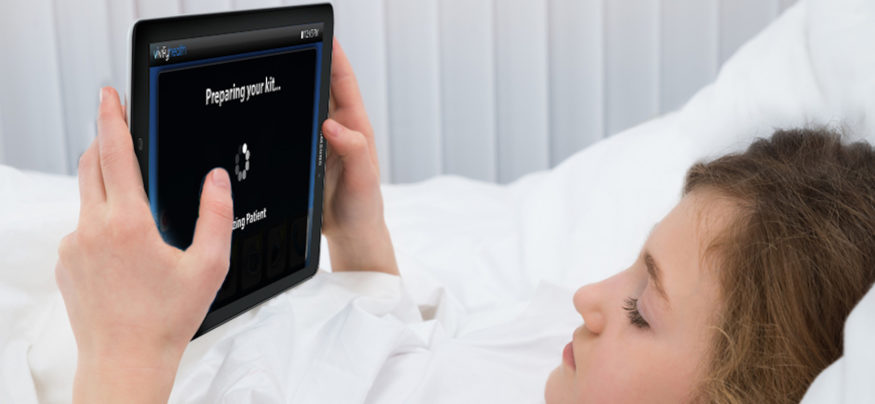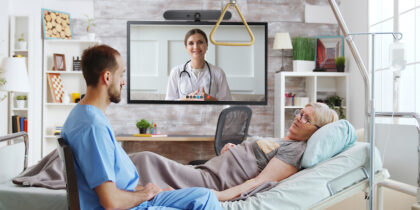No one likes the idea of a kid being stuck in a hospital room. Children are supposed to be at home, surrounded by family and friends. But those with serious health conditions also need medical supervision to stay healthy. That’s why Children’s Health in Dallas is examining remote patient monitoring benefits for pediatric patients.
While home monitoring solutions have been used with older patient populations for several years, Children’s Health is the first U.S. hospital to launch a remote monitoring program for children, using Vivify Health’s care management platform and Samsung tablets.
For the program’s first phase, Children’s Health has focused on two patient populations: recent liver transplant patients and adolescents who have recovered from kidney transplants but need ongoing medication therapy management.
Program goals include increased patient and family satisfaction, improved medication adherence, and decreased readmissions. Children’s Health is still collecting data on these objectives but is already experiencing key remote patient monitoring benefits that other healthcare providers can learn from. Three of these benefits include:
1. Reduced Hospital Stays and Readmissions
Liver transplant patients spend several weeks in the hospital and then follow up with their doctors twice a week for a month after discharge. At Children’s Health, these patients now leave the hospital with a Vivify/Samsung kit. Each day, parents use the tablets to answer questions about their children’s health and capture biometric data via Bluetooth-enabled devices.
Having real-time access to patient data enables physicians and nurse practitioners to ensure that patients remain stable. According to Kristy Carlton, the Vivify Health clinical consultant for Children’s Health, “Physicians have even sent patients home early due to the fact they were enrolled in the program.”
This is promising news for healthcare providers. With new government regulations pressuring hospitals to reduce patient stays and readmissions, getting patients home (and keeping them there) means reduced costs. It also saves money for patients’ families, their employers and their insurers.
Several recent studies have shown reduced readmissions to be among the top remote patient monitoring benefits. For example, Vivify’s remote monitoring solution has been seen to reduce hospital readmissions by 65 percent.
2. More Convenient and Comfortable Recovery Experience for Patients and Families
Not only is Children’s Health getting some young patients home earlier, they also don’t have to come back as often for follow-up visits. They can now do one of their weekly follow-up appointments via video on the tablets, allowing care providers to interact with children and families where they’re most comfortable — at home. Fewer trips to the clinic also means that there is a reduced risk of unnecessary exposure to germs, which is just as important. And for families that live outside the Dallas area, less travel means fewer days out of school and work.
“After transplant, sometimes the families have to sort of split up,” explains Dr. Dev Desai, chief of pediatric transplant at Children’s Health. “The patient and the mother may stay in Dallas for one to two months in either a hotel or Ronald McDonald House … [and this] creates a hardship for these families being split apart like that.”
According to Vivify, Children’s Health has noted 100 percent staff satisfaction and 95 percent patient satisfaction.
3. Improved Medication Therapy Management
Most of Children’s Health post-kidney-transplant adolescent patients have already recovered from surgery but need ongoing education and oversight to ensure that they continue taking important medications. These patients also capture and transmit biometric data, but the focus is on tracking medication adherence and teaching them to take responsibility for their own care.
Dr. Desai says that nonadherence is a big deal for post-transplant patients. “One of the main reasons adolescents lose their organs or have to have second transplants is because of medication nonadherence. The remote patient monitoring program will teach our patients how to be active in the ongoing management and monitoring of their health.”
Based on the success of this program with transplant patients, Children’s Health plans to offer the solution to two new patient populations this year. The IT staff is also integrating Vivify’s platform with the organization’s electronic health records system so providers can access all patient data in one place.
Julie Hall-Barrow, vice president of virtual health and innovation at Children’s Health, says, “This technology will help pave the way for higher-quality patient interactions, decreasing costs through early intervention, and all-around better care management.”
To learn more about how remote patient monitoring can improve pediatric health outcomes, read the full case study.







